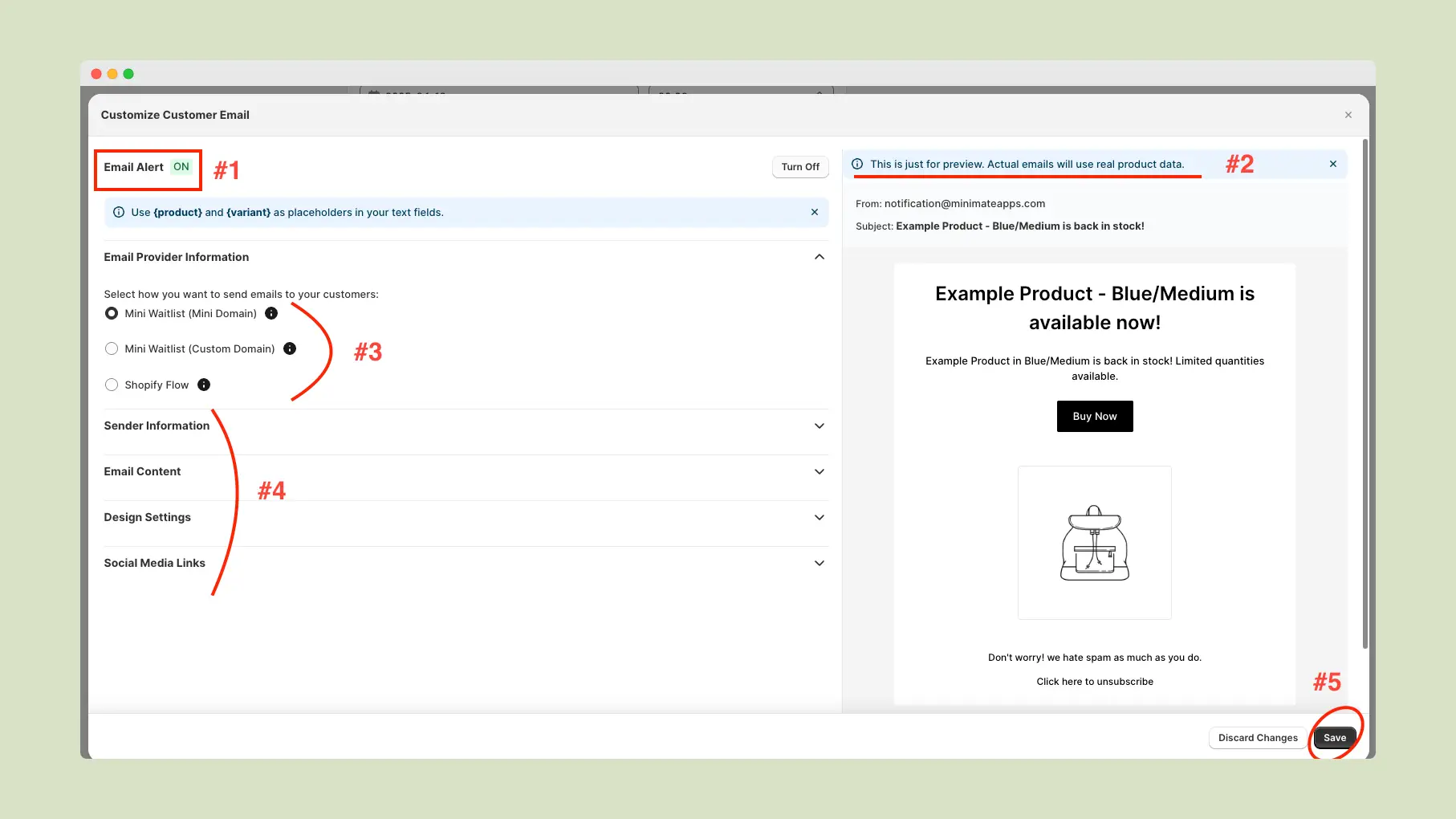Running out of stock on popular products can be frustrating — not just for your customers, but also for your bottom line. But instead of losing those sales, why not turn them into opportunities?
The right strategy to collect emails for back in stock products, help you to notify interested shoppers the moment your product is available again, recover missed revenue, and even grow your email list in the process. In this article, we’ll show you the best way to collect emails for back-in-stock products on Shopify.
Why Collect Emails for Back in Stock Products?
When a product is sold out, most shoppers just leave. But if you give them a way to sign up for a restock alert, many will gladly hand over their email address to be notified. This helps you:
- Recover lost sales by bringing customers back the moment inventory returns
- Grow your email list with qualified, high-intent leads
- Improve customer experience by showing that you care about demand
- Track product demand and prioritize restocking based on actual interest
How to Set Up “Back in Stock” Email Collection on Shopify
There are a few ways to do this, but the easiest and most effective solution is using a Shopify waitlist or restock alert app. Here’s how you can do it step by step:
1. Install a “Back in Stock” or Waitlist App
Apps like Restock Alert & Waitlist ‑Mini make it easy to create a “Notify Me When Available” button directly on your product pages. Once installed, the app automatically detects when a product is out of stock and replaces the “Add to Cart” button with an email capture form.
Try Restock Alert & Waitlist ‑Mini →
2. Customize the Message & Design
You can customize the label (e.g., “Notify me when available”, “Get restock alert”) and choose how the form appears — inline or as a popup. Make it match your brand’s tone and style.

3. Automate Email Notifications
Once a customer joins the waitlist, the app will automatically notify them by email when the item is restocked. You don’t have to lift a finger — it’s all automated. This is where back in stock automation becomes powerful.
4. Analyze Demand & Plan Restocking
Most waitlist apps give you analytics — how many people are waiting for which products. This helps you prioritize what to restock and when.
Use Cases: Who Can Benefit From This?
Back in stock email collection is useful across industries:
- Fashion stores: Notify customers when trending items are restocked
- Limited edition products: Gauge demand before restocking or re-launching
- Seasonal businesses: Let customers know when high-demand items are available again
- Small batch producers: Collect waitlists before making more inventory
Don’t Just Say “Sold Out” — Say “Join the Waitlist”
Most Shopify themes display a simple “Sold Out” message. But that’s a dead end. With a Shopify waitlist app, you turn that moment of disappointment into a chance to connect with your customer and make a sale later.
It’s also a great way to collect emails without offering a discount — these are customers who already want the product, not casual browsers.
Key Features to Look For in a Waitlist App
- Easy installation (no coding)
- Automatic back in stock emails
- Customizable design and messages
- Analytics on waitlist demand
- GDPR-compliant email capture
Get Started Today
Setting up a waitlist is one of the simplest ways to grow your email list and boost your sales from out-of-stock products. Whether you sell clothing, home goods, or digital products, your shoppers will appreciate being notified when their favorite items come back.
Don’t lose another sale to “Sold Out.” Add a waitlist to your store and start collecting emails now.
Install Restock Alert & Waitlist ‑Mini for Free
Frequently Asked Questions
Can I collect emails only for specific products?
Yes! Most waitlist apps allow you to enable or disable the feature per product or collection.
Can I customize the restock email?
Absolutely. You can edit the subject line, message body, and even include discount codes if you’d like.
Is it GDPR compliant?
Yes, apps like Mini: Waitlist are built to be fully compliant, with consent messaging and email opt-outs.
